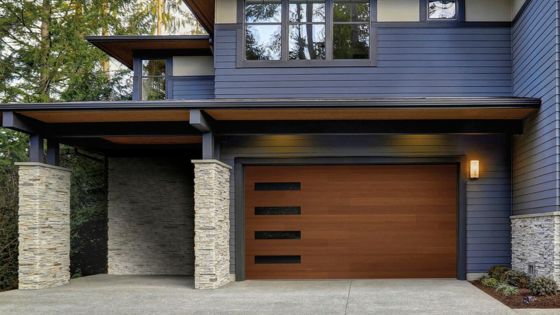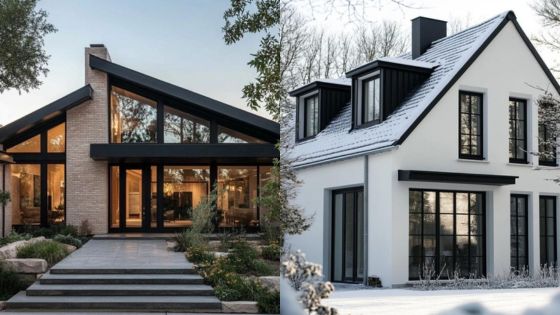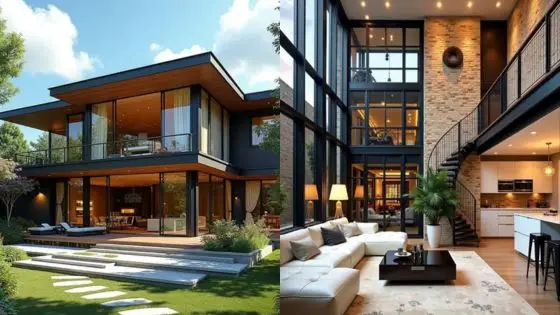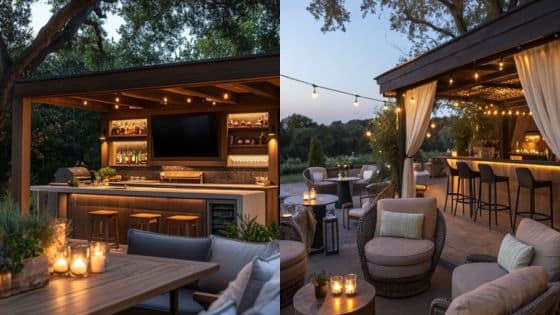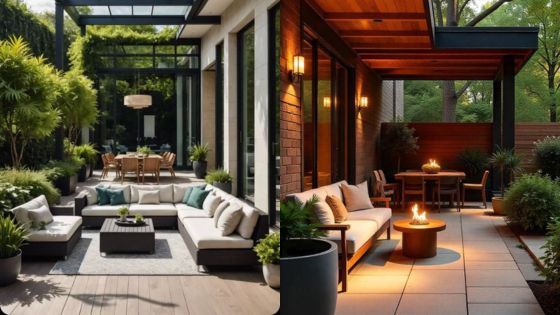A kitchen remodel can significantly impact a home’s value, making it one of the most rewarding renovations. Investing in strategic updates can lead to an increased return on investment and enhance the overall appeal of the space. Understanding which elements to focus on can transform a standard kitchen into a standout feature for potential buyers.
As a central hub of activity, the kitchen’s layout and design hold great importance. With the right combination of appliances, cabinetry, and finishes, homeowners can create a functional and aesthetically pleasing environment. This not only makes daily life more enjoyable but also presents potential buyers with a well-thought-out space that they can envision themselves using.
Taking the time to evaluate current trends and thoughtful renovations can yield impressive results for home value. By implementing practical ideas, homeowners can ensure their kitchen becomes a key selling point, capturing attention in a competitive market.
Key Takeaways
- A well-planned kitchen remodel can significantly boost a home’s market value.
- Strategic updates in appliances and finishes enhance both functionality and aesthetics.
- Focus on current trends to maximize appeal and return on investment.
Evaluating Kitchen Layout and Flow
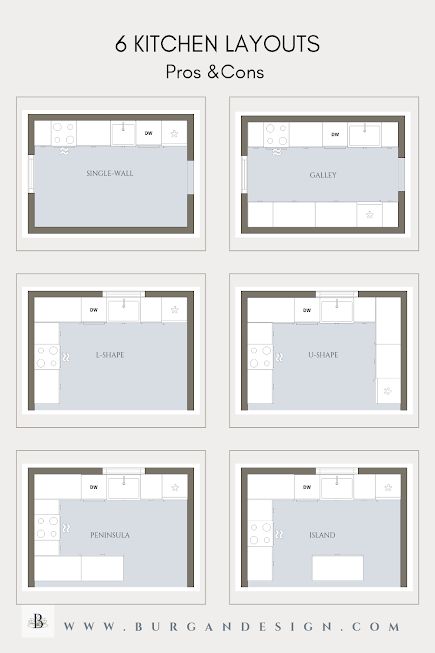
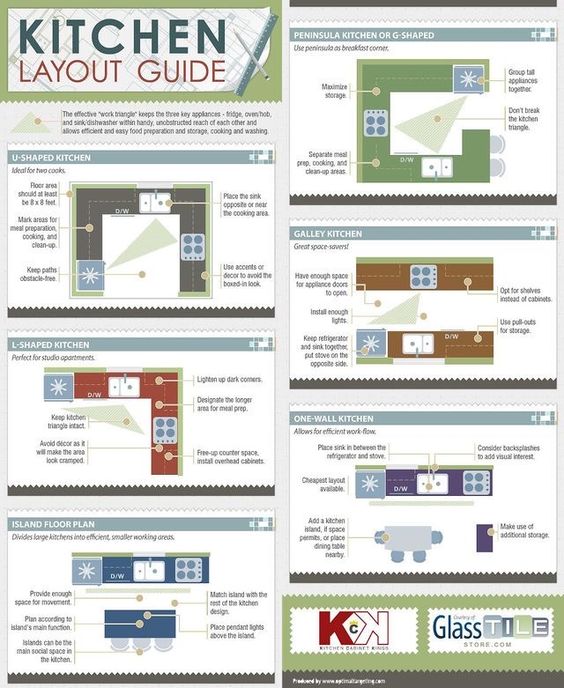
When assessing kitchen layout and flow, it’s essential to prioritize functionality. A well-thought-out layout enhances the cooking experience and increases home value.
- Galley: Efficient for small spaces, allowing for quick access between appliances.
- L-Shaped: Provides open space for dining and socializing.
- U-Shaped: Offers ample storage and countertop space, ideal for large families.
Considerations for Flow:
Work Triangle: The distance between the stove, sink, and refrigerator should be efficient. Ideally, each leg of the triangle measures between 4 to 9 feet.
Traffic Patterns: Ensure there is enough room for movement. A clear pathway prevents blockage during meal preparation.
Accessibility: All key areas should be within easy reach. This includes storage and work surfaces.
Zoning: Group similar areas together. Cooking zones, prep areas, and clean-up stations should be well-defined.
Incorporating these elements into kitchen upgrades can significantly improve usability. A layout that enhances flow will make a kitchen more appealing to potential buyers, ultimately boosting the home’s market value.
Choosing the Right Appliances
Selecting the appropriate appliances is crucial for enhancing kitchen functionality and boosting home value. This involves considering energy efficiency and how appliances fit aesthetically and practically within the kitchen design.
Energy-Efficient Options
Energy-efficient appliances significantly reduce energy costs while promoting environmental sustainability. Look for products with the Energy Star label, which indicates compliance with energy-saving standards.
Refrigerators: Modern energy-efficient models can save homeowners hundreds on utility bills. Features like improved insulation and LED lighting enhance their efficiency.
Stoves: Gas models often provide better efficiency compared to electric stoves. Induction stovetops are becoming popular for their rapid heating and energy savings.
Dishwashers: Newer dishwashers require less water and energy. Selecting a unit that can handle half-loads efficiently can further save on resources.
These options might have a higher initial price tag but result in long-term savings.
Integrating Appliances Into Design
Choosing appliances that complement the kitchen’s overall design is essential. Integrating them seamlessly enhances both aesthetics and usability.
Built-In Models: Built-in appliances, like ovens and refrigerators, create a streamlined look. They can also save space, making the kitchen feel larger.
Finishes and Colors: Stainless steel remains a popular choice due to its modern appeal. Custom paneling allows appliances to blend with the cabinetry, offering a cohesive design.
Smart Technology: Incorporating smart appliances adds convenience and modernity. Features like remote monitoring can optimize efficiency and reduce energy consumption.
By thoughtfully integrating appliances, homeowners can elevate both the functionality and the visual appeal of their kitchens.
Cabinetry and Hardware Upgrades
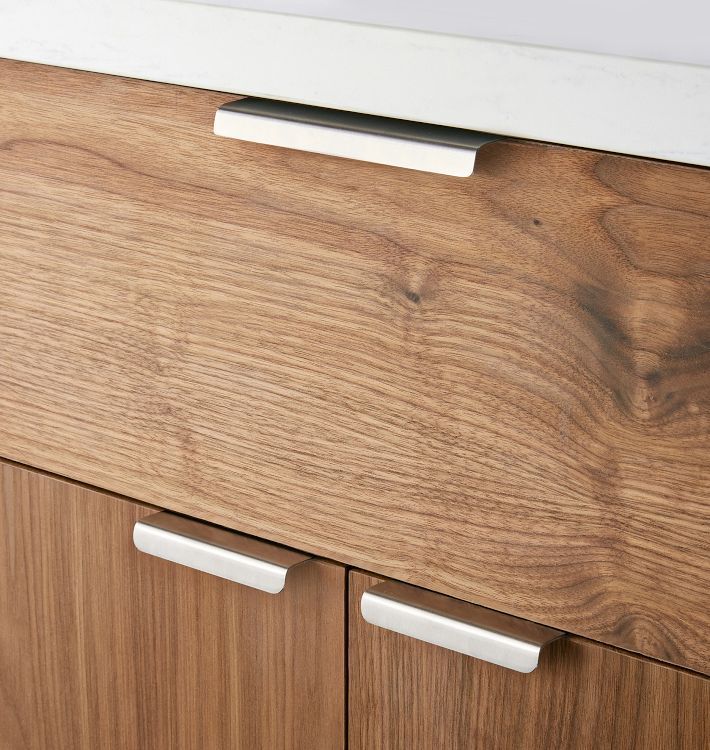
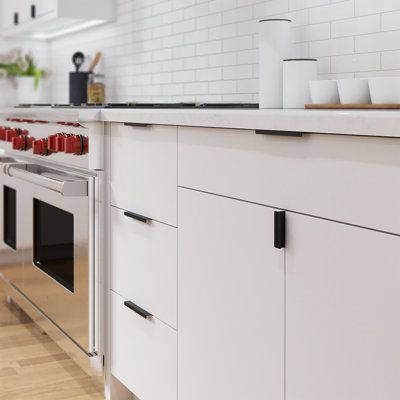
Upgrading cabinetry and hardware can significantly enhance a kitchen’s visual appeal and functionality. Key considerations include whether to refinish existing cabinets, implement innovative storage solutions, and select hardware that adds elegance.
Refacing vs. Replacing Cabinets
Refacing cabinets involves applying a new veneer to the existing cabinet boxes while replacing doors and drawer fronts. This option is often more cost-effective and less time-consuming than a full replacement. It can provide a modern look without the need to remodel the entire kitchen. For example shaker doors made to measure can be used to enhance the customizability and aesthetic appeal of the refaced cabinets.
On the other hand, replacing cabinets entirely allows for a complete overhaul. Homeowners can select new styles, colors, and configurations that better suit their needs. For instance, taller cabinets can maximize vertical storage, making them ideal for smaller spaces. Choosing between refacing and replacing depends on budget, desired aesthetic, and structural necessity. For a more modern look, consider adding cabinet lighting to your kitchen. This subtle yet impactful feature not only enhances the aesthetics of your space but also provides functional task lighting for meal preparation and cooking.
Innovative Storage Solutions


Maximizing kitchen efficiency is crucial, and innovative storage solutions play a vital role. Incorporating pull-out shelves, lazy Susans, and under-cabinet racks enhances accessibility and organization.
Consider adding deep drawers for pots and pans, as they eliminate the need to bend down and dig through cabinets. Vertical dividers can also be integrated to keep baking sheets and cutting boards upright. These thoughtful designs not only increase usability but can also enhance the overall value of the kitchen, making it more attractive to potential buyers.
Hardware as the Jewelry of the Kitchen
Hardware plays a significant role in a kitchen’s design, often referred to as the “jewelry” that completes the look. Selecting the right knobs, pulls, and hinges can instantly elevate the aesthetic of cabinetry.
Options range from sleek stainless steel to vintage-inspired finishes, each conveying different styles. Soft-close hinges and drawer slides contribute to functionality, ensuring a smooth user experience. Upgrading hardware is a straightforward way to refresh a kitchen without extensive renovations, providing an effective blend of form and function.
Countertops and Backsplashes

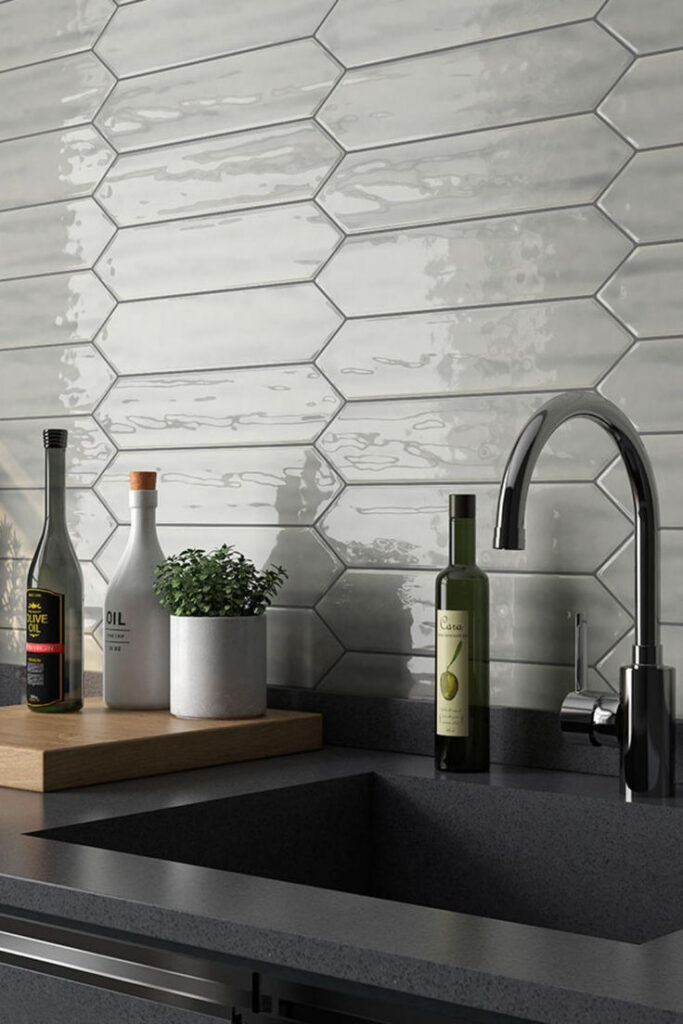
Selecting the right materials for countertops and backsplashes can greatly enhance the aesthetic and functional value of a kitchen. These elements not only serve practical purposes but also set the tone for the overall design.
Quartz and Granite Options
Quartz and granite are among the most popular choices for kitchen countertops due to their durability and aesthetic appeal.
Quartz is engineered stone, composed of about 90% crushed natural quartz crystals combined with resins and pigments. This material offers a non-porous surface, making it resistant to stains and bacteria. Homeowners appreciate its wide range of colors and patterns, which can fit any design scheme.
Granite, on the other hand, is a natural stone known for its unique textures and patterns. Every granite slab is distinct, providing an upscale look. Although granite requires periodic sealing to maintain its resistance to stains, it can withstand heat and scratches. Both options enhance the kitchen island’s functionality while contributing to increased home value.
Trendy Backsplash Designs
Backsplashes serve as a visual focal point in kitchens, offering protection against moisture while adding style to the space. Current trends focus on a variety of materials and styles.
Tile backsplashes, particularly subway or patterned tiles, remain a favorite due to their versatility. They can be arranged in various layouts, such as herringbone or chevron, to create unique designs.
Metallic backsplashes, made from stainless steel or copper, offer a modern, sleek look and are easy to clean. They reflect light, making kitchens appear brighter.
Incorporating glass tiles can also introduce color and texture. These options not only create visual interest but also help define the kitchen’s character, making it a noteworthy feature of any remodel.
Flooring Considerations

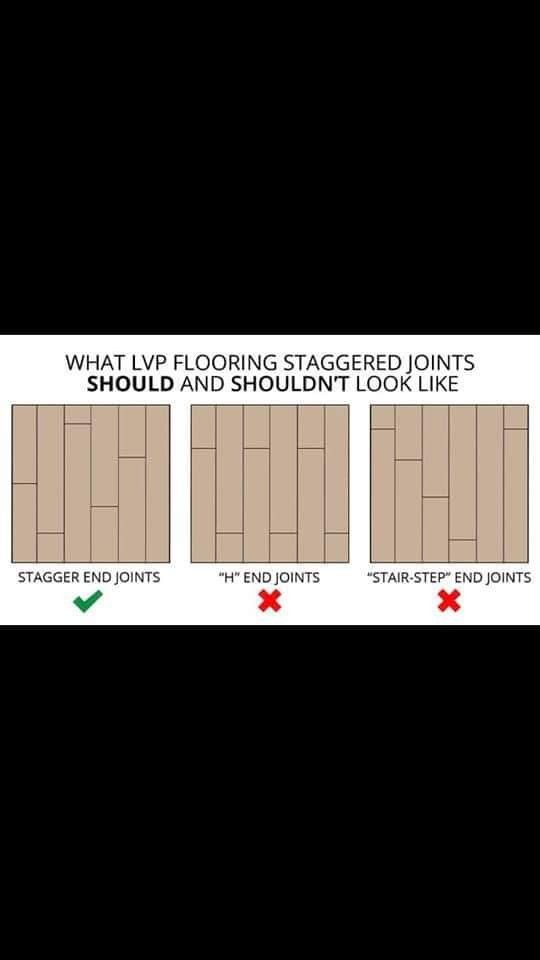
Choosing the right flooring can significantly impact both functionality and aesthetic appeal in a kitchen remodel. Two popular options are hardwood and vinyl, each bringing unique benefits to the table. Additionally, tile patterns and durability play a crucial role in selecting flooring that lasts.
Hardwood vs. Vinyl
Hardwood flooring is a classic choice that adds warmth and sophistication to a kitchen. It can increase home value, appealing to potential buyers due to its timeless look. However, hardwood may be susceptible to moisture damage, which is a concern in kitchen environments.
Vinyl flooring, in contrast, offers a versatile and cost-effective alternative. It is highly resistant to water and scratches, making it ideal for high-traffic areas. Vinyl also comes in various styles that can mimic the appearance of hardwood or tile. This flexibility allows homeowners to achieve their desired aesthetic without the expense of genuine wood.
Tile Patterns and Durability
Tile flooring is resistant to spills and stains, making it a practical choice for kitchens. Available in a wide range of patterns and colors, tiles can create stunning visual effects. Homeowners can opt for large-format tiles for a modern look or smaller tiles to create intricate designs.
Durability is a key consideration when selecting tiles. Porcelain tiles are particularly strong and resistant to wear, while ceramic tiles offer a more budget-friendly option. The right tile choice enhances the kitchen’s aesthetic and ensures longevity, maintaining its appeal for years to come.
Lighting and Fixtures
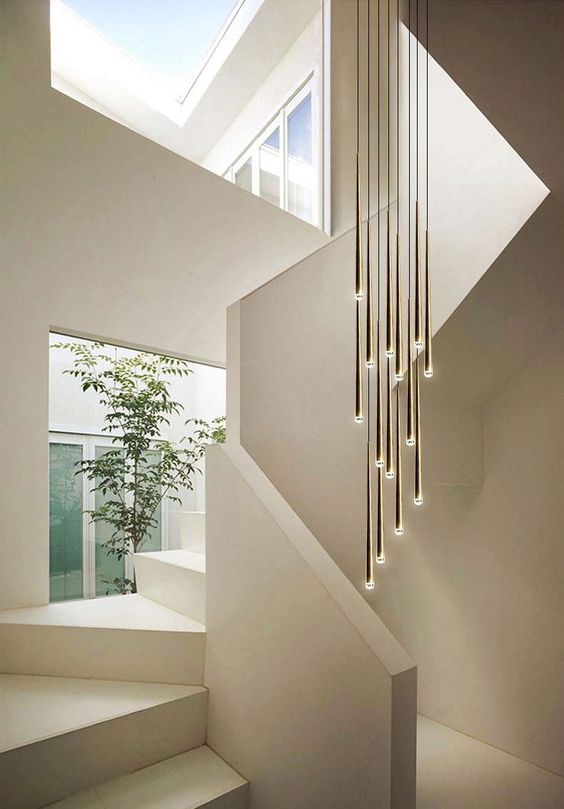
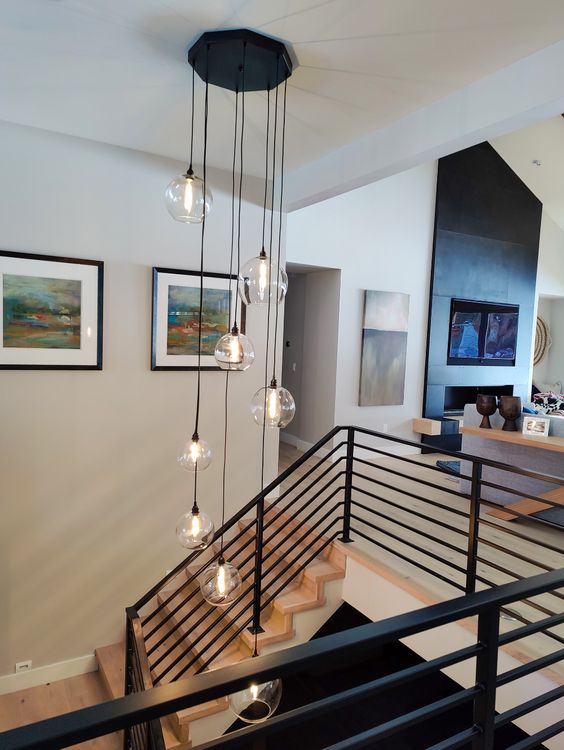
Effective lighting and fixtures significantly enhance the kitchen’s atmosphere and functionality. Strategically chosen options can elevate both the aesthetic and value of the home.
Enhancing with Ambient Lighting
Ambient lighting sets the overall tone for the kitchen. It is essential to create a welcoming and functional environment. Recessed lighting fixtures or ceiling-mounted options provide a soft, even glow to the entire area.
Consider incorporating dimmer switches. They allow flexibility to adjust brightness levels based on the time of day or activity. A ceiling fixture, such as a stylish chandelier, can also serve as a focal point.
For open floor plans, installing fixtures that coordinate with adjacent spaces maintains a cohesive design. Explore using LED lighting; it is energy efficient and offers a range of color temperatures to suit personal preference.
Task Lighting for Functionality


Task lighting is crucial for specific kitchen activities. It illuminates areas where precision is necessary, such as countertops and cooking spaces. Under-cabinet lighting is a popular choice, as it directly illuminates work surfaces.


LED strip lights are an excellent option for this purpose. They provide bright, focused light while being space-efficient. Pendant lights over islands or bars also offer direct illumination and add visual interest.
Placement is vital for efficacy. Ensure lights are installed to reduce shadows, especially in food preparation zones. The combination of ambient and task lighting results in a well-lit kitchen that enhances both comfort and function.
Paint Colors and Interior Design
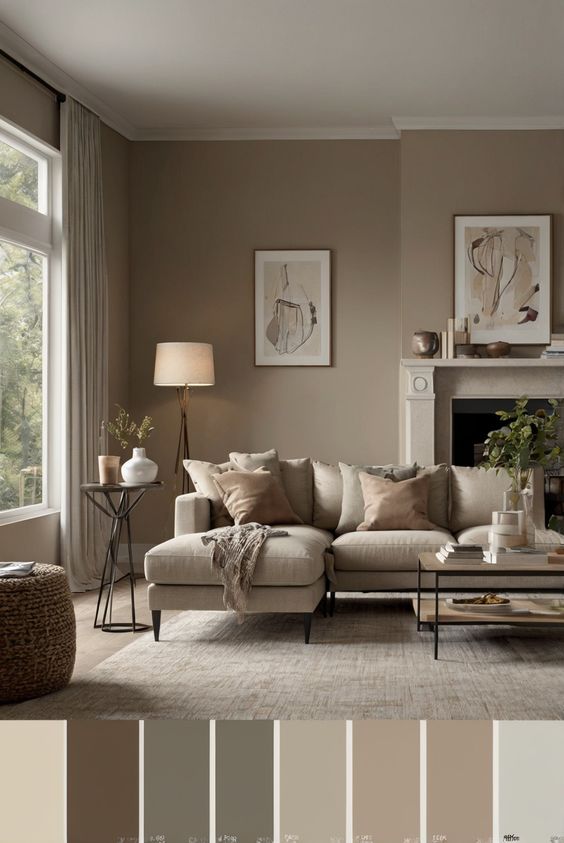
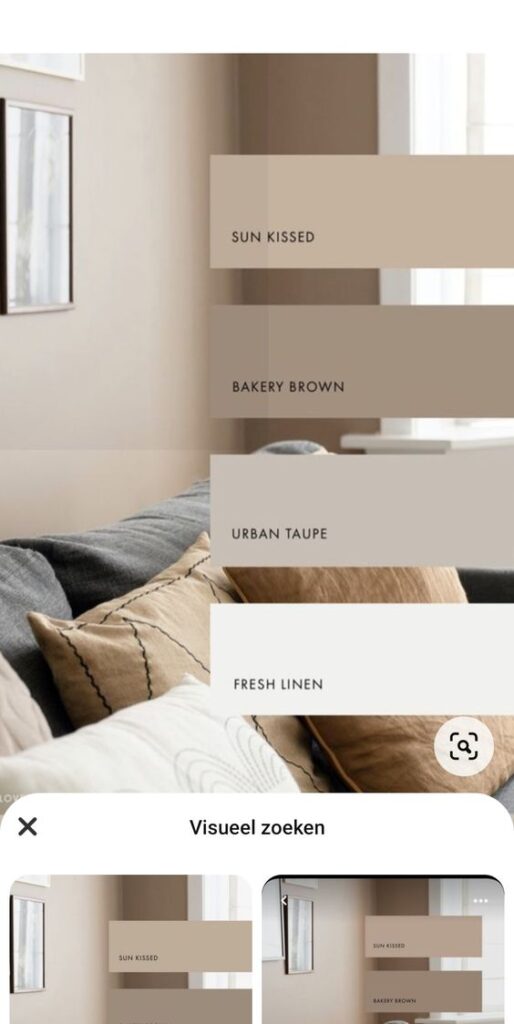
The choice of paint colors in a kitchen remodel significantly impacts both aesthetics and potential resale value. Selecting the right shades can create a welcoming atmosphere while appealing to prospective buyers. Two key areas of focus are the use of neutral tones and the strategic application of accent colors.
Neutral Tones for Resale
Neutral colors are a safe bet for any kitchen remodel. Shades such as soft whites, grays, and beige will attract a broader audience when it comes time to sell. These hues create a clean, sophisticated backdrop that allows potential buyers to visualize their personal style.
Popular neutral shades include Revere Pewter, Alabaster, and Agreeable Gray. They work well with various countertops and cabinetry. Using these colors on walls can enhance natural light, making the space feel larger and more inviting.
In addition, neutral tones should be complemented with matching fixtures and hardware for a seamless look. This coordinated approach not only boosts the kitchen’s appeal but also establishes a timeless quality.
Accenting with Colors

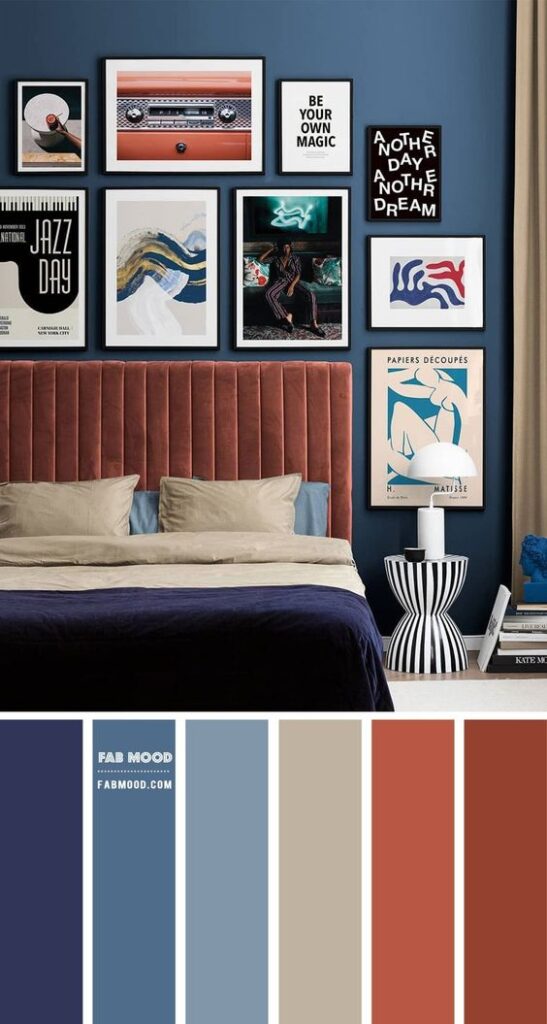
While neutrals are essential, incorporating accent colors can add character and depth. Accent walls, painted in bolder hues like navy blue or emerald green, can create a focal point without overwhelming the space.
Choosing the right accent color is critical. These shades should harmonize with the overall color scheme while providing an interesting contrast. For instance, pairing a beige wall with a striking teal accent can create visual intrigue.
It’s also effective to select accent colors that tie into other design elements, such as backsplash tiles or kitchen accessories. This strategy not only enhances visual flow but also creates a harmonious and well-designed space.
Increasing Energy Efficiency
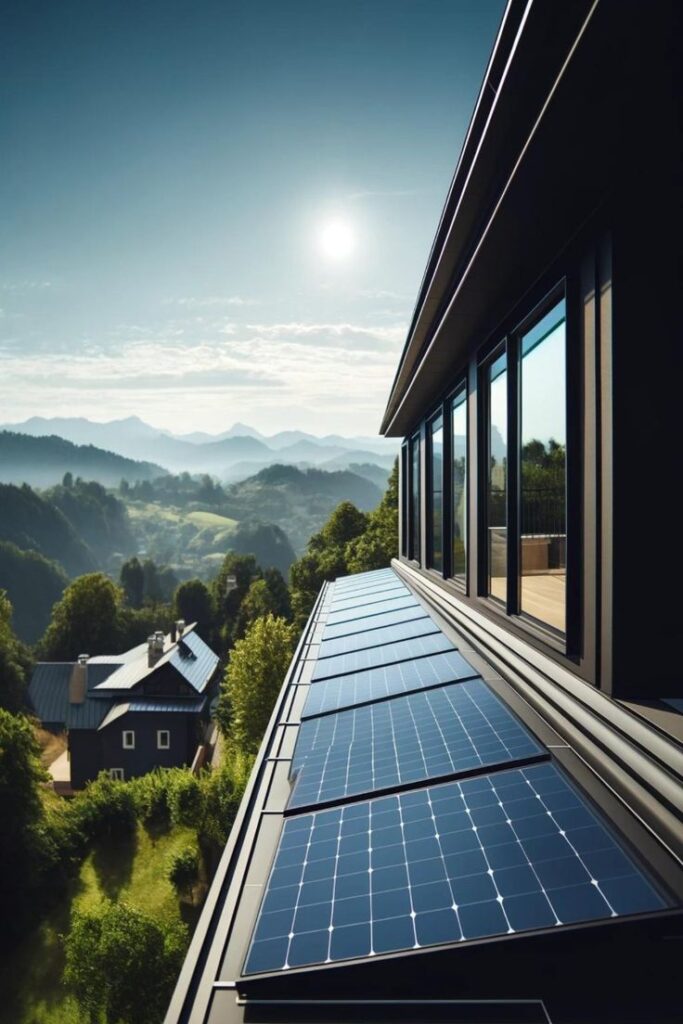
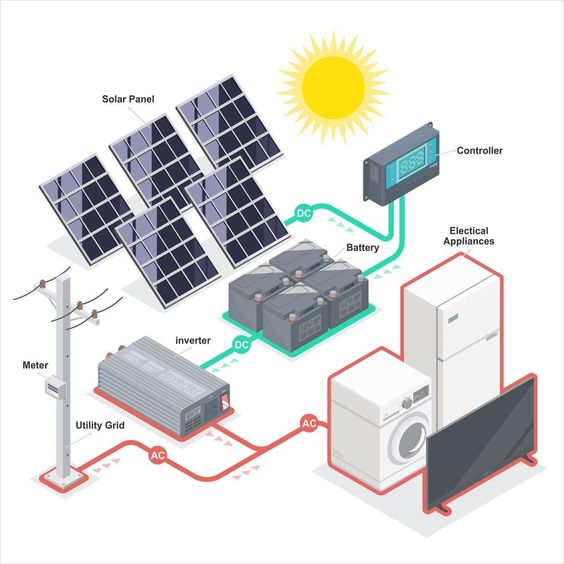
Enhancing energy efficiency in a kitchen remodel can significantly impact a home’s overall value. Key improvements include upgrading windows and insulation, along with integrating smart home technology for better climate control.
Upgrading Windows and Insulation
Windows play a critical role in energy conservation. Replacing old windows with double or triple-pane energy-efficient options can reduce heat loss, which is essential for maintaining indoor temperatures. Low-emissivity (Low-E) glass reflects heat back indoors during winter and keeps it out in summer.
Proper insulation is equally important. Adding insulation in walls and the attic helps to minimize the workload on HVAC systems. This not only saves energy but also enhances comfort levels in the home. Proper insulation can decrease energy bills by up to 20%. Homeowners should consider materials like cellulose or spray foam for maximum efficiency.
Smart Home Technology Advancements
Integrating smart home technology can greatly enhance energy management. Smart thermostats allow homeowners to set specific temperatures based on their schedules, optimizing HVAC usage. They learn from behavior patterns and can adjust settings automatically, further conserving energy.
Smart lighting systems can also contribute to efficiency. These systems use LED bulbs that consume less power and can be controlled remotely. Homeowners can set timers or automate lighting based on occupancy, ensuring that lights are used only when needed.
Incorporating these technologies not only improves energy efficiency but also adds to the appeal of a home, making it more attractive to potential buyers.
Final Touches and Details
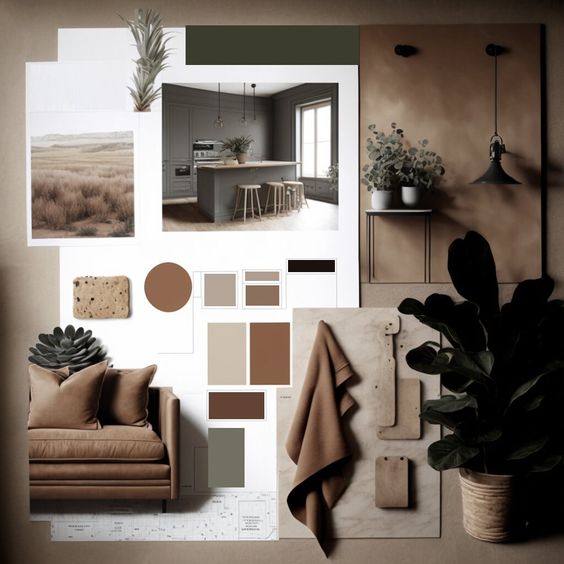
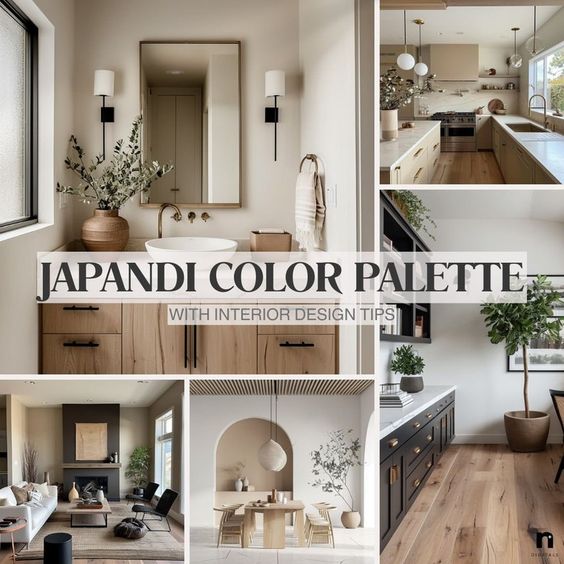
Attention to details can significantly enhance a kitchen remodel. Thoughtful choices in fixtures and storage solutions not only improve functionality but also elevate the space’s aesthetic appeal.
Choosing a Kitchen Faucet
Selecting the right kitchen faucet is essential for both convenience and style. A faucet should harmonize with the overall design while meeting practical needs. Consider finishes; a matte black faucet offers a modern edge and is less prone to showing fingerprints.
Quality is critical. Premium materials, such as brass or stainless steel, provide durability and resistance to corrosion. Additionally, functionalities like pull-down sprayers facilitate easier cleaning and food prep, aligning with contemporary kitchen activities.
Choosing a model with a high arc can enhance functionality, ensuring ample space for large pots and pans. Ultimately, a well-chosen faucet is not just a utility; it serves as a design centerpiece.
Open Shelving vs. Upper Cabinets


The decision between open shelving and upper cabinets can dramatically influence a kitchen’s appearance and feel. Open shelving offers a contemporary, airy look, while also making dishes and decor easily accessible. This option encourages a personal touch, allowing homeowners to display attractive dishware or unique kitchen accessories.
On the other hand, upper cabinets provide concealed storage, aiding in decluttering the visual space. They can be designed to match the cabinetry or introduce contrast through color and finish. Details such as glass-front doors can serve as a hybrid solution, allowing for display while still providing some concealment.
Ultimately, the choice depends on the desired balance between aesthetics, storage needs, and individual style preferences. Each option presents unique advantages that can elevate the kitchen’s overall design.
Planning for Return on Investment
Maximizing return on investment (ROI) is essential when planning a kitchen remodel. Homeowners should consider which updates will enhance resale value and deliver significant benefits without overspending. Understanding the impact of different renovations helps prioritize effective and budget-friendly projects.
Minor Kitchen Remodel Value
A minor kitchen remodel can yield a remarkable ROI. Key updates often include resurfacing cabinets, upgrading hardware, and replacing countertops. Such changes are relatively low-cost yet significantly enhance the kitchen’s aesthetic appeal.
Research indicates that a minor kitchen remodel can recoup about 70% to 80% of its costs at resale. Features like new appliances, floor upgrades, and fresh paint contribute positively to the home’s market value.
Investing in energy-efficient appliances can attract buyers who prioritize sustainability and eco-friendliness, further boosting the home’s appeal. Homeowners benefit from both immediate use and long-term value appreciation.
Key Renovations with High Resale Value
Certain renovations promise higher resale values than others. Major kitchen upgrades, including full remodels that open layouts or modernize outdated spaces, can lead to impressive returns.
Research emphasizes that contemporary designs with open layouts appeal to buyers. Features like new, high-quality cabinetry and marble countertops are attractive attributes. On average, a major kitchen remodel can recover up to 60% of its cost.
Focus on trends that remain appealing, such as improved lighting, smart appliances, and backsplash updates. Investing in these key renovations not only elevates the kitchen’s functionality but also strengthens the overall home value. Prioritizing quality materials and craftsmanship ensures lasting appeal to future buyers.
Alternative Home Improvement Projects
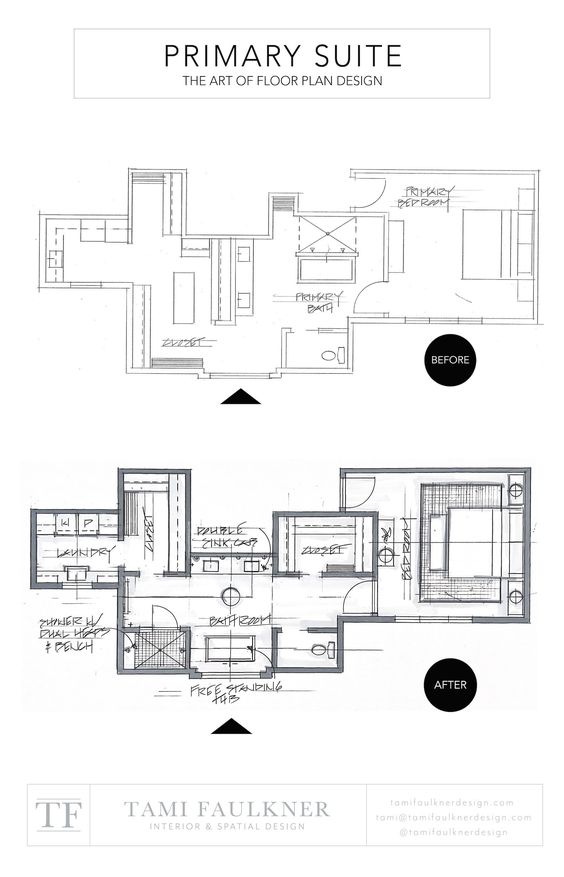

Home improvement projects can enhance both functionality and aesthetic appeal, ultimately boosting a property’s value. Focusing on cohesive design and curb appeal can lead to significant improvements in both appearance and marketability.
Bathroom Updates for Cohesive Design
Updating a bathroom offers an excellent opportunity to increase a home’s appeal. Simple fixes like replacing faucets, updating lighting, and re-grouting tiles can create a fresh look without demanding extensive renovation.
Incorporating modern finishes such as quartz countertops and new cabinetry can elevate the overall design. A well-designed bathroom can include features like a stylish vanity and efficient fixtures.
Investing in energy-efficient lighting and water-saving toilets not only enhances the space but also appeals to environmentally conscious buyers. These improvements, while not overly complex, can contribute significantly to a cohesive aesthetic across the home.
Enhancing Curb Appeal
Curb appeal plays a crucial role in first impressions. Simple upgrades such as an entry door replacement can dramatically improve the façade. Opting for a stylish front door with modern hardware adds character and security.
In addition, garage door replacement can offer a substantial boost. A new door with appealing colors and designs creates a harmonious look that invites buyers.
Upgrading siding can further enhance the exterior. High-quality materials and fresh colors breathe new life into an aging structure.
Focusing on landscaping, like planting seasonal flowers or maintaining a neat lawn, also contributes to eye-catching curb appeal. These thoughtful updates are effective in making a property stand out in a competitive market.
Frequently Asked Questions
This section addresses common inquiries about kitchen remodels that can enhance a home’s value. Key factors include impactful upgrades, budgeting strategies, cost elements, and important considerations for resale.
What kitchen upgrades have the biggest impact on home value?
Upgrades that tend to yield the highest returns include modernizing appliances, replacing countertops with high-quality materials, and installing new cabinets. Open-concept layouts and improved lighting can also significantly enhance appeal.
How can one remodel a kitchen on a tight budget?
Remodeling on a tight budget can be achieved by repainting cabinets instead of replacing them, using laminate or butcher block countertops, and opting for minor upgrades like new hardware and fixtures. Shopping at discount stores or using reclaimed materials can further minimize costs.
What are the key cost elements in a kitchen remodel?
Key cost elements typically include materials, labor, and permits. Cabinets and countertops often represent the largest portions of the budget. It’s important for homeowners to include a contingency fund for unexpected expenses.
What are the essential considerations for a kitchen remodel to increase resale value?
Homeowners should focus on timeless designs and functionality that cater to a wide range of buyers. Neutral color palettes, efficient layouts, and quality finishes can significantly attract potential buyers and add value.
What are the before and after differences to expect with a kitchen remodel?
After a remodel, homeowners can expect improved functionality, modern aesthetics, and enhanced energy efficiency. An updated kitchen space may also provide a more inviting atmosphere for social gatherings and daily use.
How should a homeowner plan a kitchen update for selling purposes?
Planning should begin with research into current market trends and buyer preferences. Homeowners should prioritize updates that offer the best return on investment while ensuring the kitchen aligns with the overall home style.
- 4.4Kshares
- Facebook0
- Pinterest4.4K
- Twitter0
- Reddit0
